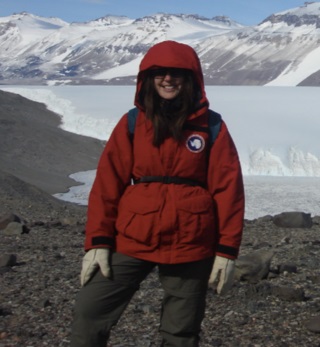NASA to Slam Rocket into the Moon (on Purpose)!
NASA hasbold and visionary plans to send humans to the Moon by 2020 where humans willlearn to live and work on another planetary body in our Solar System. Sendingpeople to the Moon isn't easy, though, and there is a lot that we still don'tknow about our closest celestial neighbor. That makes it tough to plan a humanmission to the Moon because unlike during the Apollo program of the 1960s, thistime we are going to the Moon to stay for a longer period of time.
The goal isto learn to live and work on the Moon and then take all of the "lessonslearned" from this experience so we can then send humans to Mars by 2030. Marsis an incredibly fascinating planet but is much further away from the Earthcompared with the Moon, so NASA plans to use the Moon as a "stepping stone" toMars.
Before wecan build a lunar base, though, there are a few important decisions regardingthe mission architecture that need to be made. One of those decisions involvesresource utilization. Should we use the natural resources that are on the Moonto "live off the land"? If so, what are the resources that might be availableon the Moon? One idea is that there may be water ice in the permanentlyshadowed regions near the poles of the Moon.
It is VERYcold in these places and ice may be stable there for billions of years. Thereis tantalizing and somewhat contradictory data regarding the presence of lunarice from the Clementine and Lunar Prospector missions to the Moon as well asdata from the Arecibo radio telescope and numerical modeling efforts. Watercould potentially be used by the astronauts for drinking and bathing but canalso be broken apart into hydrogen and oxygen which can be used for rocketfuel. NASA really needs to know if there is lunar water that we might be ableto use - and to help answer that question, NASA is going to slam a rocket intothe Moon!
The LunarCrater Observation and Sensing Satellite (LCROSS) will purposely impact theMoon near the pole to kick up a huge plume of material. This will be analyzedfor the presence of water and other water-bearing compounds. The LCROSSmission will use the spent Earth departure upper stage (EDUS) of the launchvehicle and a small shepherding satellite to guide the EDUS to the Moon. LCROSSwill blast the permanently dark floor of one of the Moon's polar craters withthe EDUS early in 2009 to test the theory that ancient ice lies buried there.
The EDUS isessentially the size of a large sport utility vehicle (SUV) and will impact theMoon at over 5,600 miles per hour! This event will excavate a new crater onthe Moon the size of 1/3 of a football field and 16 feet deep. The impact willcause an explosion of material from the crater's surface to create a plumeabove the lunar surface (reaching to altitudes of over 30 miles) with enoughmaterial to fill the space shuttle cargo bay 10 times!
Specializedinstruments aboard the shepherding spacecraft will analyze this plume for thepresence of water (ice and vapor), hydrocarbons and hydrated materials and willrelay this data back to Earth. Then the shepherding spacecraft will alsoimpact the Moon to create a second plume. Telescopes all around the world andin space will also be pointed at the LCROSS impacts, each with specialinstruments to monitor the gigantic lunar plumes of material that are ejectedabove the lunar surface. The impacts will be so big that you will be able toobserve them with reasonable grade amateur telescopes.
Breaking space news, the latest updates on rocket launches, skywatching events and more!
Thisexciting mission is being run out of NASA's Ames Research Center in Californiain cooperation with its spacecraft and integration partner, Northrup-Grumman. LCROSS represents one of NASA's first missions in the return to the Moon andwill provide valuable precursor information as we plan to return humans to thelunar surface.
Moreinformation about the LCROSS mission can be found at http://lcross.arc.nasa.gov.
- Top 10 Moon Facts
- Lunar Observatories: Grand Plans vs. Clear Problems
- NASA Unveils Strategy for Return to the Moon
- Scientists Gather to Plan Observations from the Moon
- Images: Future Vision: Lunar Base

Heldmann’s scientific research interests focus on studies of the Moon and Mars. Her Mars research focuses on studies of recent water on the Red Planet through spacecraft data analysis, numerical modeling, and fieldwork in Mars-analog environments such as the Outback of Australia, the Canadian High Arctic, the Atacama Desert, Spitsbergen, the Mojave Desert, and Antarctica, among other locales. Her work focuses on martian and terrestrial gully features which can be indicative of geologically recent liquid water activity. Liquid water is especially important to understand climate, geology, and the potential for past and/or present life on Mars. She also studies surface and subsurface ice deposits on both Earth and Mars to further understand the physics, geomorphology, and potential habitability of such cold icy locales in the Solar System.
